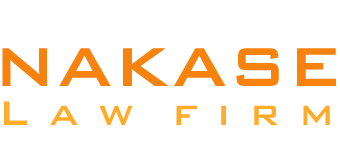What are the different kinds of compensation?
Employers must understand the various forms of compensation and how to design competitive benefit packages for employees if they wish to reward them fairly. Let’s examine the many kinds of pay that employers may provide.
Any payment made to an employee by their employer while they are employed is referred to as compensation. The worker will give their work, time, and expertise in exchange.
This pay may come in the form of a salary, stock options, pension funds, paid time off, benefits, bonuses, and more. Beyond the U.S. and Canada, compensation is also commonly known as remuneration.
Having a thorough understanding of the various forms of pay is essential to designing a competitive benefits package for your present staff. As long as you distinguish yourself from the competition, this will help you not only keep your best employees but also draw in new ones to your company.
HR and pay & benefits specialists are in charge of carrying out a compensation analysis and developing a strong compensation plan. If there isn’t a Human Resources department in place, the manager or owner of the company will often handle this. If you’re not an expert in this field, employing the appropriate compensation metrics will help.
Let’s say you haven’t given your pay and benefits plan much thought yet. If so, you might be passing on opportunities to raise employee engagement and happiness levels, boost staff retention rates, and enhance your employer brand.
What kinds of employee compensation are there?
Pay scales differ from nation to nation. For instance, in the United States, health benefits frequently account for a sizable portion of an employee’s pay and benefits package. On the other hand, childcare, lunch fees, and parental leave are more typical in several regions of Europe.
There are essentially two categories of compensation:
- Direct financial compensation
- Financial and non-financial forms of indirect compensation
Understanding the various forms of compensation is a prerequisite for anybody involved in developing an employee compensation plan and pay structure. This is due to the fact that it is the organization’s duty to inform all applicants and staff members about the compensation plan. It is particularly crucial for the hiring process as well as for performance and pay evaluations. The primary two kinds of compensation have so many alternatives that it is easy for employees to get confused.
Let’s take a closer look at different forms of compensation.
Compensation provided directly
One type of financial, or monetary, compensation is direct compensation. The four primary forms of direct compensation are as follows:
Hourly
In return for their time and labor, semi-skilled, unskilled, contract, temporary, and part-time workers often get hourly earnings. Industries such as food and beverage, hospitality, and construction employ people hourly. Hourly wage earners are usually entitled to overtime compensation. Any extra hours performed outside the parameters of their contract are included in this remuneration.
When determining your employees ‘ pay, you must abide by local laws concerning minimum wage.
Salary
Most full-time employees, skilled workers, and those in managerial roles usually receive annual salary. Pay is frequently a sign of how much the company values this employee’s long-term prospects.
Teachers, accountants, physicians, and managers in the retail and hotel industries are a few professions that pay salaries.
An employee’s base pay, or base salary, consists of both their hourly income and their salary.
Commission
A common type of compensation given to staff members in sales positions is commission. Usually, it will be based on a target or quota that has been set. The commission paid out will increase in proportion to the quota that is met.
Commission rates are frequently determined by a number of predetermined criteria, such as profit margins and revenue.
Some workers will only accept commission payments or work for a commission-only compensation.
Bonuses
Bonuses are frequently given by employers to staff members in response to year-end performance reports or when an employee meets personal targets. There are instances where the manager has the last say.
Bonus payments may be made on an annual, quarterly, or even post-completion basis for each project.
Incentive pay includes commissions and bonuses as well as piece rate, share of profits, options for stocks, and shift differentials.
However, incentives can also be given even in cases where an employee doesn’t reach a predetermined goal. For instance, let’s say the company wishes to award everyone because it had a fantastic year. The bonus would be considered variable compensation in this situation.
Tips are another typical kind of payment in human resources-related fields, like hospitality.
Annuities and savings plans fall under the category of deferred pay, which is another subset of direct compensation.
When a person hits their goals or does a good job in their position, they frequently receive merit pay.
Indirect compensation
Given its financial worth, indirect compensation is nonetheless classified as a financial type of payment. Employees do not, however, receive it in cash directly. For this reason, some forms of indirect remuneration are considered non-monetary, while others are considered monetary. This frequently differs throughout companies.
A common term for indirect compensation is employee benefits or employment perks.
Here are a few common examples of indirect compensation.
Equity bundle
When equity is granted to an employee as part of their remuneration package, it basically means that they will have the opportunity to hold stock in the company or have the option to purchase it.
Equity packages are typical for startups. These companies might not have a lot of money or resources, so they need additional rewards to draw in and keep workers.
Options for stocks
With this type of pay, employees have the right, after a predetermined amount of time, to buy a particular number of shares at a predetermined price. The employee won’t own any stock in the company, which sets this apart from an equity package.
Before receiving this pay, employees may be required to work for 3 to 5 years in the case of many stock options.
Benefits
Benefits for employees typically include retirement programs, medical coverage, life insurance, disability insurance, pet insurance, and legal defense.
As previously said, because it is costly to purchase, healthcare is a typical benefit in the US. On the other hand, the NHS in the UK provides free healthcare.
Other typical advantages that workers search for when considering a new position at a new company include retirement funds and pension plans.
According to research, 48% of US job seekers stated they would be more inclined to apply for a position with competitive benefits. Thus, while your base income is crucial, it’s also critical to consider your entire benefits package.
Non-financial compensation
Benefits that come with non-monetary compensation include:
- Paid or unpaid time off
- Flexible scheduling
- Parental leave
- Learning and growth opportunities
- Company vehicles
- Phones or laptops
- Meals
According to a Fractl survey, American workers place the highest importance on healthcare as a benefit. However, other indirect compensation types like childcare, extra vacation time, and tuition reimbursement also made the list of desired benefits.
Silicon Valley corporations provide many alluring benefits to their staff members, such as free holiday accommodations, game tables, concerts, on-site yoga courses, massages, and catered lunches.
Even while some of these kinds of compensation might not seem like much, they can greatly impact your employee’s day. Their general contentment both at work and outside of it may increase as a result.
It’s critical that you provide a range of perks to appeal to the many kinds of workers you already have and hope to acquire in the future. For instance, perks like daycare and parental leave will be highly valued by your employees if any of them are planning to start or expand a family in the near future or if any of them are already parents.
Additionally, depending on the guidelines you follow, several types of compensation can be seen as both a benefit and a drawback. If you provide every employee a laptop for work, for example, are they expected to use it exclusively for work-related activities, or are they allowed to use it for personal usage as well? Having two computers could be considered a hassle by some people. Some people might find it offensive that the business is keeping tabs on every private web browsing session they’ve ever had. Because of this, it’s critical to understand your core employees’ needs and desires before creating a compensation plan.
Once more, companies have variations in the definition of non-monetary compensation.
Total compensation
The entire pay package for an employee is comprised of all the relevant forms of compensation mentioned above. At different work levels, the total compensation can (and will) frequently contain a variety of incentives and benefits.
Employees can benefit from a comprehensive compensation statement. From the beginning, they are well informed about their entitlements and the many forms of compensation that are available to them. For instance, separating basic pay, commissions, and bonuses will clarify to workers what they are guaranteed and what they must achieve to gain bonuses.
Direct compensation and indirect compensation are two separate columns into which you could arrange the remuneration. Alternatively, you might take it a step further and divide the pay into many subcategories within each of them, including pension funds, corporate cars, stock options, and healthcare.
Every new recruit has to have access to a manager for any inquiries, as well as a comprehensive, lucid report outlining their entire salary. This implies that every manager needs to know the fundamentals of the compensation plan that is being offered. They ought to be able to respond to inquiries and describe how it operates.
Studies have indicated that progressive and transparent compensation management practices within an organization lead to increased employee engagement, less employee turnover, and enhanced employer branding. HR departments must therefore exercise strategic judgment when it comes to the total pay packages they provide to staff members and how they convey them at every level of the recruiting and employment process.
The law requires a certain level of compensation. Thus, your team needs to make sure that these constantly evolving requirements are followed. In addition to helping you keep your current staff, offering a competitive salary package will undoubtedly make you stand out from the competition and draw in the best people.
In sum
Having a suitable compensation plan will help you draw in and keep talent.
To draw top talent to your company and retain those people, it is critical to comprehend employee perks and types of compensation and to create competitive compensation packages for each employee.
When deciding between two job offers, an employee is likely to evaluate the finer points of the compensation plan because many companies pay identical earnings and salaries. A company that provides modest benefits, such as complimentary meals and more vacation time, is probably going to attract more candidates than one that doesn’t.
As a result, having a solid team is essential to your ability to develop and retain a strong employee pay plan. It comprises a sizable portion of your value proposition for employees.
There’s never been a better moment to start designing your employees’ compensation package if you haven’t already.































